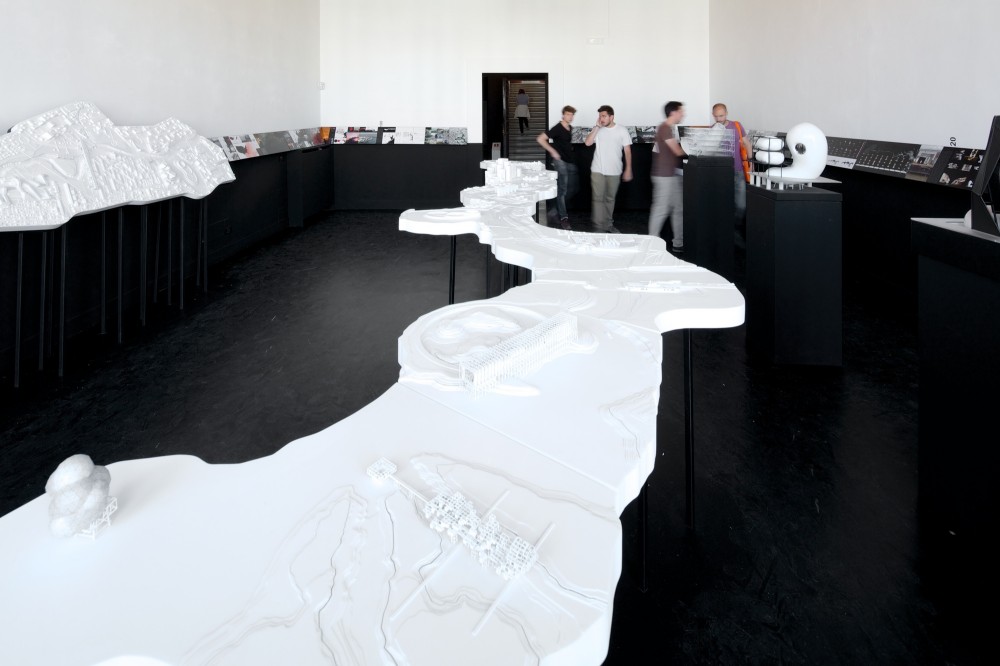University of Southern California
Assistant Professor Rachel Berney and Visiting AC Martin Chair Oliver Schulze are guiding students through an investigation of the Mobile City of LA in our current studio course, ARCH 642 “The Mobile City – People, Transport, & Public Life.” While we tend to link the city of Los Angeles with the automobile (think: Missing Person’s “Nobody Walks in LA”), the reality of transportation in LA is far more complex. The city pioneered large streetcar systems in the late 19th century and early 20th century. The last incarnation of those systems – the red line – was collapsed in favor of embracing freeway construction in the mid 20th century. Since the 1970s, however, public transportation networks and services have grown rapidly in LA. The city now has the largest bus system in the United States and there has been more transit building in the last decade in LA than in any other city in the United States. LA also hosts the most-traveled urban commute rail line in the country – the Blue Line – with 80,000 trips per weekday. The next iteration of Los Angeles is that of THE MOBILE CITY, one connected and networked via public transit options with higher density housing at nodes and with opportunities to reweave the urban fabric of the city to incorporate visible and legible natural systems and public space. It is a crucial time for reinvention and change in the city’s life. The challenge is great. The possibilities for design greater.
Laurel Consuelo Broughton was named one of the fifteen 2014 Racked.com Young Guns of Fashion for her collection, WELCOMECOMPANIONS an offshoot from her design studio WELCOMEPROJECTS. Her residential project Shed House is now under construction in Malibu, CA and slated for completion January 2015. In July she gave the talk Soft Abstraction as part of UCLA Jumpstart’s Series, Endlessly Worthwhile Dilemmas. Her project Retrospective City is on view at the A+D Museum in Los Angeles until August 31, 2014. Gallery Attachment, a collaborative project with Andrew Kovacs, was selected to participate in the Storefront For Art and Architecture’s exhibition program WorldWide StoreFront, forthcoming fall 2014.
Patrick Tighe, FAIA (Professor Adjunct) USC School of Architecture received the IDEAS 2 Award for Excellence in Steel Frame Building Design from the American Institute of Steel Construction for an affordable housing project in West Hollywood. The Sierra Bonita Affordable Housing project for people living with disabilities also won an Award of Merit for Structural Engineering from the Structural Engineers Association of Southern California (SEOSC).
Chu+Gooding Architects (Annie Chu and Rick Gooding) has recently completed design and drawings for a 110,000 sf Collection Storage, Conservation and Research Facility for the new Autry Resource Center in Burbank. A 110,000 sf Collection Storage, Conservation and Research Facility which is scheduled to start construction in January. Chu+Gooding Architects is also in the design phase for the 100-Room Tiverton House Renovation at UCLA. Rick Gooding’s Subterranea drawing exhibit in the Napa Gallery at Cal State University Channel Islands from November 13 to December 5 and will include about a dozen of the USC Student 3rd Year Models from this past Spring Semester.
Adjunct Associate Professor Eric Haas’s firm, DSH // architecture, was the recipient of Honorable Mentions for both the Para Los Niños Family Center and the Villa Tangente in the Re-Thinking the Future 2014 Awards.
Assistant Professor Alison B. Hirsch received the James H. Zumberge Research and Innovation Fund Grant to develop her next book, Landscape as Thick Description. She conducted a new MLA research studio titled “The Geography of the LA Riots: Designing the Public Realm in the Insurgent Spaces of the City.”
Lauren Matchison, NCARB, will serve as Interim Director of the Master of Landscape Architecture program for the remainder of 2014.
Professor G. Goetz Schierle is preparing a book on fabric structures.
Ed Woll is enjoying a re-organized practice focusing more completely than before on design of affordable housing. The re-organized firm — TWG Architects Inc — is a troika/collective with three equal principals and is currently in production on two substantial projects: one in LA (Eagle Rock neighborhood — 46 units at 4 stories over parking) and one in the Bronx (120 units at 13 stories with no parking!). Both projects are for special needs clients and incorporate extensive social service provisions; both feature site development that includes some urban farming.
Sofia Borges, Lecturer, released two new books in August. Hide and Seek:The Architecture of Cabins and Hide-Outs and Building Better: Sustainable Architecture for Family Homes are now available on Amazon and bookstores worldwide.

 Study Architecture
Study Architecture  ProPEL
ProPEL 
